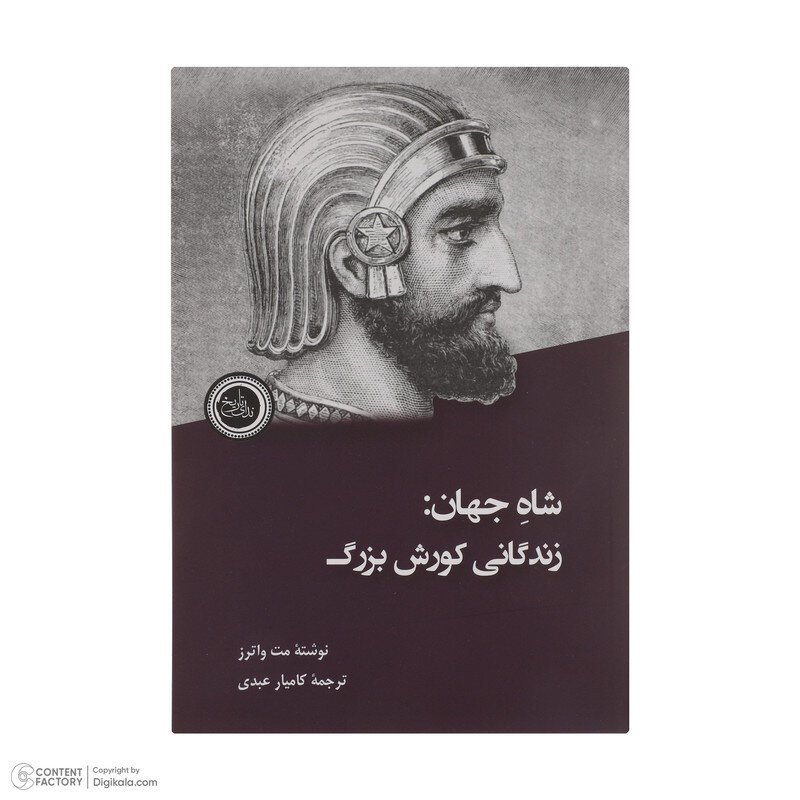Matt Waters’ book on Cyrus the Great published in Persian

TEHRAN-The book “King of the World: The Life of Cyrus the Great” written by Matt Waters has been released in the Iranian bookstores.
Neda-ye Tarikh Publications has brought it out in 279 pages with a translation by Kamyar Abdi, ILNA reported.
The Persian Empire was the world's first hyperpower, with territory stretching from Central Asia to Northeastern Africa and from Southeastern Europe to the Indus Valley. It was the dominant geopolitical force from the later sixth century to its conquest by Alexander in the 330s B.C.
Much of the empire's territory was conquered by its founder, Cyrus the Great, who reigned from 559-530 B.C. Cyrus became a legend in his own lifetime, and his career inspired keen interest from Persia's unruly neighbors to the west, the ancient Greeks. The idealized portrait of Cyrus by the Greek Xenophon had a profound impact on ancient, medieval, and early modern debates about rulership.
“King of the World,” originally published in 2022 by Oxford University Press, provides an authoritative and accessible account of Cyrus the Great's life, career, and legacy.
Matt Waters draws from all of these sources while consistently contextualizing them to provide a cohesive understanding of Cyrus the Great. This overview addresses issues of interpretation and reconciles limited material, while the narrative keeps Cyrus the Great's compelling career at the forefront. Cyrus' legacy is enormous and not fully appreciated― “King of the World” takes readers on a journey that reveals his powerful impact and preserves his story for future generations.
Matt Waters is a professor of classics and ancient history at the University of Wisconsin-Eau Claire in the U.S.
In his preface and introduction chapter, he sets out his aim to provide a new general history on Cyrus the Great, the founder of the Persian Empire that conquered the Median Empire, the Kingdom of Lydia, and the Babylonian Empire. The Persian Empire at its peak stretched over two million square miles (over 5 million square kilometers), which is an impressive feat. Waters’ overall argument is that Cyrus is one of the most pivotal figures in ancient history, yet he is underappreciated and often overlooked.
The first chapter provides background information about the state of Persia before Cyrus. It covers the 8th and 7th century BCE interactions between the Persians and the nearby Babylonians, Assyrians, and Elamites. This context is very important, as it demonstrates that Persia was already looking to expand before Cyrus came into power. It sets the historical stage to highlight Cyrus’s later contribution as well.
The second chapter discusses the sources on Cyrus and information on his life before his ascension to the throne. Not much is written about Cyrus’s birth or early life in Near Eastern sources; thus, most of the information on his early life comes from later Greek authors such as Herodotus, Ctesias, and Xenophon. These sources share common threads about Cyrus; however, they also contradict each other as well. Waters masterfully integrates these sources to shed light on the historian’s craft, which is a great element for a general audience to witness.
The third and fourth chapters cover Cyrus’s military campaigns against the Medes, Lydians, and Babylonians. In both chapters, Waters does a fine job providing the context and background of these empires before Cyrus invaded them. He takes an interdisciplinary approach, using written sources, seals, and archaeological evidence to provide a full picture of these events. Attention to detail while maintaining a strong narrative is a strength of the book and provides new insights even for those who are familiar with this great Persian king.
The final two chapters, five and six, attest to Cyrus’s legacy and importance to history, which is a major point of emphasis in the book. Chapter five looks at the imperial projects he accomplished. It also provides a detailed description of the archaeological remains of Pasargadae, the new Achaemenid capital that Cyrus founded. The city includes his tomb, a gate, two palaces, a royal garden, and two towers. Several images from David Stronach’s prior excavations are used as visuals for the reader. Chapter six builds on this theme of Cyrus’s legacy and importance by looking at how he has been treated since his death.
Overall, Waters accomplishes what he sets out to do in this book. He provides a welcome new general book on Cyrus. He also attests to the importance of Cyrus as an influential figure in his age as well as today. The interdisciplinary approach of weaving together history, archaeology, and other fields is much appreciated as well.
SS/SAB
Leave a Comment